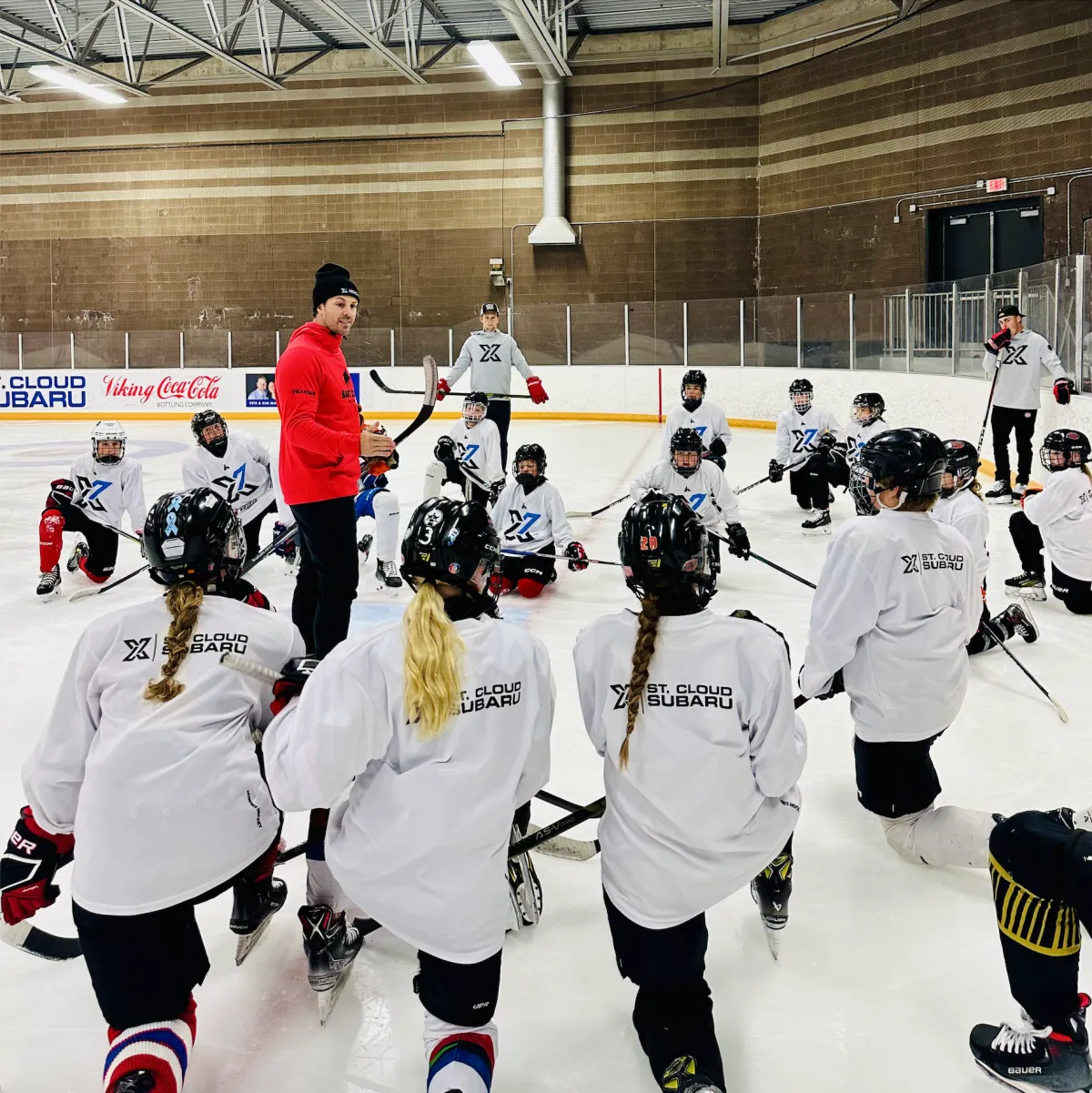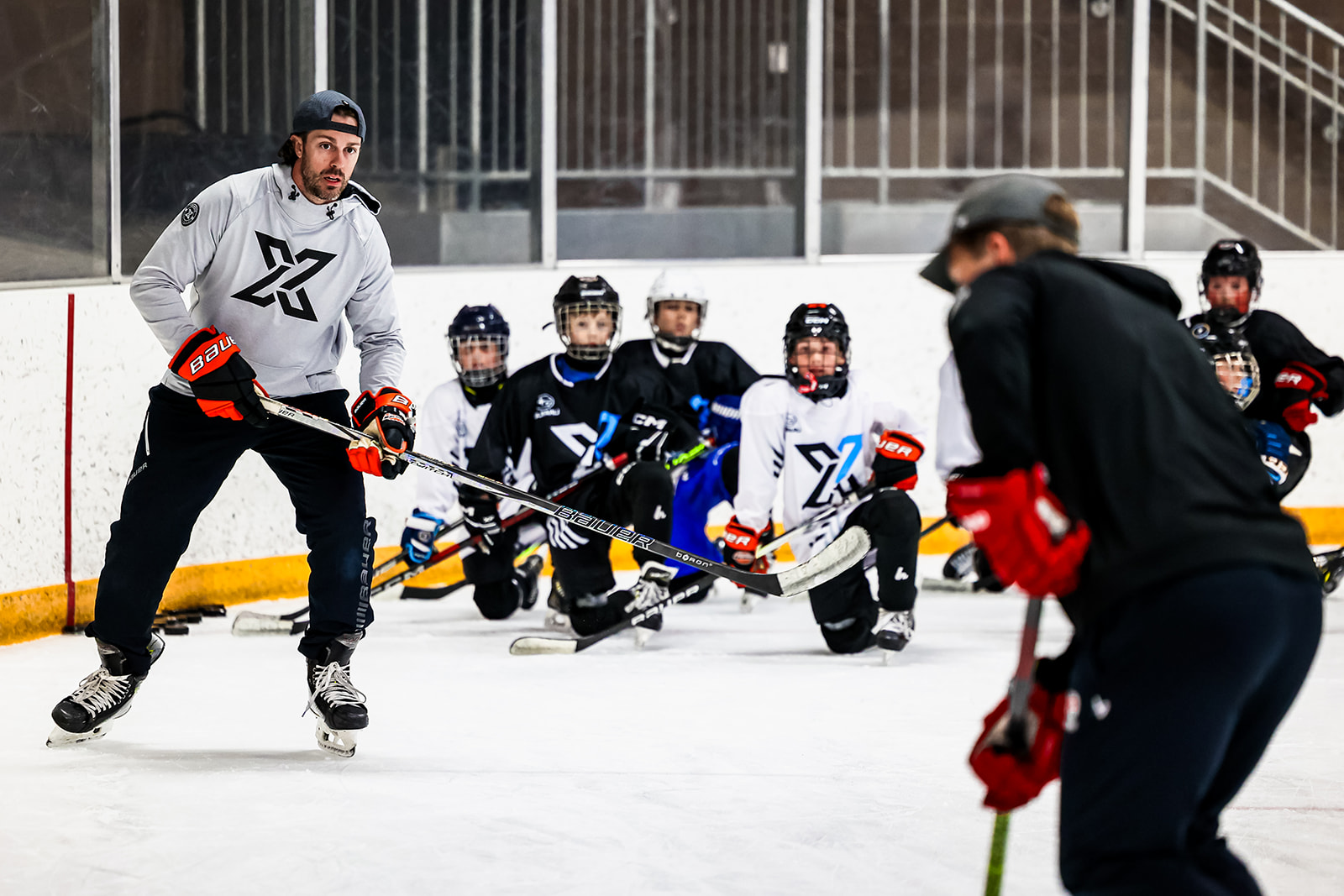Stay in the Game: Hockey Talk Newsletter
Insights, Tips, and Updates Straight to Your Inbox

Stay In The Game, Subscribe to Hockey Talk!
Join our community of athletes, parents, and hockey enthusiasts to get exclusive advice from Coach John Swanson, training tips, and the latest updates on all things hockey. Don’t miss a beat—sign up today!

Resources
How Hockey Players Can Skate Faster With These Two At Home Drills
Single Stride Mechanics Drill
Focuses on balance, proper knee positioning, and leg extension. Players work on maintaining stability while extending the leg outward and returning to a neutral position, with progressive incorporation of arm movement for better coordination.Weight Shift and Recovery Drill
Emphasizes shifting weight side-to-side while maintaining a stable posture. The drill improves stride linkage and balance, with the addition of arm drive to simulate actual skating movements.Progression and Confidence Building
The drills are designed to be done at home with different progression levels based on a player's skill. The video stresses starting at an appropriate level to build confidence rather than over-challenging the player.
Stride Analysis for Skating Improvement
Stride Mechanics and Extension
The video emphasizes the importance of a full stride extension, pointing out that incomplete knee extension can limit stride length and skating efficiency.Posture and Arm Drive
Proper posture is crucial, with a focus on keeping the torso upright, head neutral, and chest tall. The arm drive should involve the elbows leading backward, not the hands, to maintain balance and momentum.Edge Use and Weight Distribution
Effective skating requires correct edge work, transitioning smoothly from the outside edge to a flat skate before extending. Maintaining a low hip position helps improve balance and stride length.
How To Fix Loose Skate Blades
Single Stride Mechanics Drill
Focuses on balance, proper knee positioning, and leg extension. Players work on maintaining stability while extending the leg outward and returning to a neutral position, with progressive incorporation of arm movement for better coordination.Weight Shift and Recovery Drill
Emphasizes shifting weight side-to-side while maintaining a stable posture. The drill improves stride linkage and balance, with the addition of arm drive to simulate actual skating movements.Progression and Confidence Building
The drills are designed to be done at home with different progression levels based on a player's skill. The video stresses starting at an appropriate level to build confidence rather than over-challenging the player.
NHL Pro's Hidden Stickhnadling Drills: Golf Ball Trick Exposed
Common Flaws in Stickhandling
Issues like excessive bottom-hand grip pressure, lack of wrist rolling, and a chopping motion rather than smooth brushing are highlighted as common mistakes among players.Drills for Improving Stickhandling
The video introduces creative drills using a cut PVC pipe, a paper towel roll, and a heavy puck to improve top-hand wrist rolling, reduce bottom-hand grip pressure, and eliminate chopping motions. These drills encourage smooth puck control and better stickhandling precision.Advanced Technique for Precision
A secret technique learned from a skilled player involves practicing with a bouncing golf ball on a rough surface without letting the blade touch the ground. This drill enhances precision by focusing on brushing and controlling the puck using only the edges of the stick blade.
Kane Drag Hockey Stickhandling Move
Introduction of the "Kane Drag" Move
The video explains why the traditional toe drag is becoming less effective at higher levels of play and introduces the "Kane Drag" as a superior alternative. This move creates more lateral deception, forcing defenders to shift their hips and allowing for better puck control in tight situations.Breakdown of the Kane Drag Mechanics
The move involves starting with a dribble, pulling the puck back at an angle with the heel of the stick, and then cupping it with the toe in a teardrop motion. The focus is on using wrist strength and thumb pressure for precision, creating a smooth figure-eight pattern.Progressions for Learning the Kane Drag
The video outlines step-by-step progressions, starting with stationary dribble patterns, followed by figure-eight drills, and finally incorporating movement by practicing around obstacles. The key benefit emphasized is the versatility of the move, which can be executed from different angles, unlike the toe drag.
Why YOU Should Look DOWN When Stickhandling
Stick Setup and Equipment Recommendations
The video emphasizes using a stick with similar height and blade pattern to the player's game stick for dryland training. Gloves are recommended for stickhandling practice to simulate real game conditions, although beginners should start without gloves to focus on hand positioning.Using Weighted Objects for Training
The video advises starting stickhandling with heavier objects, such as weighted pucks or steel balls, to build strength and control before transitioning to lighter objects like golf balls or speed pucks. This approach helps players develop proper muscle memory and grip pressure.Progression-Based Stickhandling Drills
The four-part progression for stickhandling drills includes:Holds: Maintaining control over the puck or object.
Slow Dribble: Practicing slow, controlled movements.
Full-Speed Dribble: Gradually increasing speed while maintaining control.
Eyes Up: Practicing with the head up to develop peripheral vision and awareness.

Copyright - John Swanson LLC - All Rights Reserved
Instagram
TikTok
Youtube